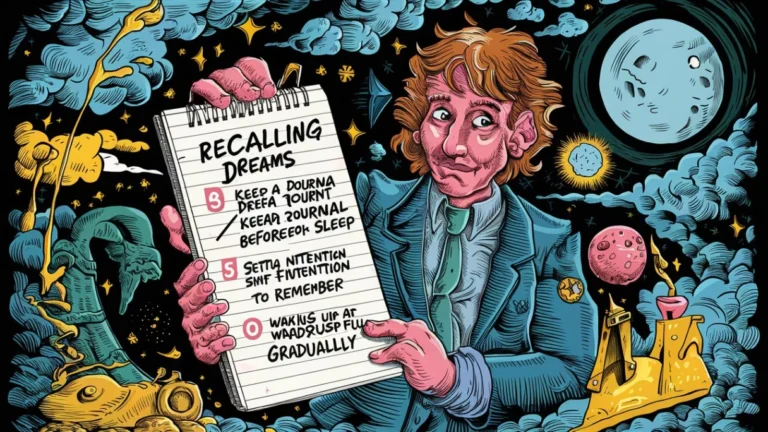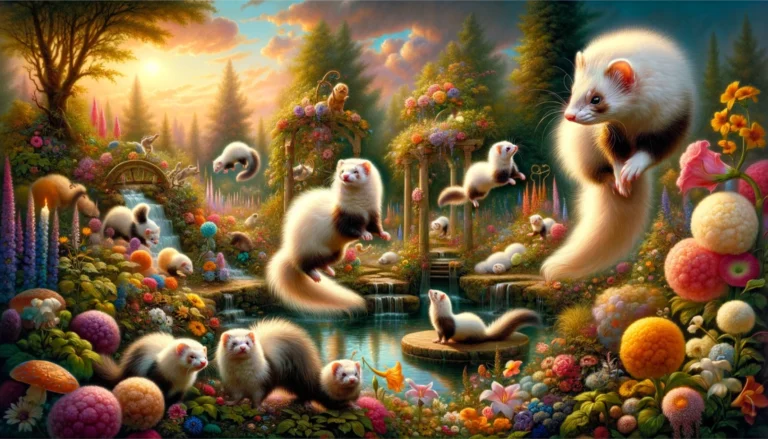Dream Recall Techniques: How to Remember Your Dreams More Vividly
Do you ever wake up with a fleeting memory of an incredible dream, only to have it slip away moments later? Dreams can be a fascinating window into our subconscious minds, offering insights, creativity, and even solutions to problems. However, many people struggle with dream recall, finding it difficult to remember their dreams vividly. In this comprehensive guide, we’ll explore effective techniques to help you improve your dream recall and unlock the potential of your dreaming mind.
Why Dream Recall Matters
Before we dive into the techniques, let’s take a moment to understand why dream recall is valuable:
- Personal Growth: Dreams can provide insights into your emotions, desires, and fears, helping you gain a deeper understanding of yourself.
- Creativity: Dreams are often a source of creative inspiration, offering unique ideas and perspectives.
- Problem-Solving: Sometimes, dreams can help you find solutions to challenges you face in waking life.
- Lucid Dreaming: Improved dream recall is a foundation for exploring lucid dreaming, where you become aware that you’re dreaming and can control the dream.
Techniques for Improving Dream Recall

1. Set an Intention
One of the most effective ways to improve dream recall is to set a clear intention before going to sleep. Take a few moments to affirm to yourself that you will remember your dreams upon waking. You can mentally repeat a phrase like, “I will remember my dreams when I wake up.” This simple act of setting an intention can prime your mind to pay attention to your dreams.
2. Keep a Dream Journal
Keeping a dream journal is a powerful tool for enhancing dream recall. Place a notebook and pen next to your bed and make it a habit to write down your dreams immediately upon waking. Even if you only remember fragments or emotions, jot them down. Over time, this practice will train your brain to focus on remembering dreams, and you’ll likely find your recall improving.
Tips for effective dream journaling:
- Write in the present tense, as if the dream is happening now.
- Capture as many details as possible, including sensations, emotions, and symbols.
- Don’t worry about perfect writing; the goal is to capture the essence of the dream.
- If you struggle to remember dreams initially, write down any thoughts or feelings you have upon waking, even if they don’t seem dream-related.
3. Wake Up Gradually
Avoid using loud, jarring alarm clocks that can startle you awake and disrupt dream recall. Instead, opt for gentler methods like a gradually brightening light or soft, natural sounds. Waking up gradually allows you to linger in the dream state for a few moments, increasing the likelihood of remembering your dreams.
4. Perform Reality Checks
Reality checks are techniques used to differentiate between dreaming and waking states. By performing reality checks throughout the day, you train your mind to question your state of consciousness, increasing the chances of recognizing when you’re dreaming. Some common reality checks include:
- Looking at your hands: In dreams, your hands may appear distorted or have an unusual number of fingers.
- Reading text: Text in dreams often appears garbled or changes when you look away and back again.
- Trying to breathe through a pinched nose: In dreams, you can often breathe despite pinching your nose.
Performing reality checks regularly during the day can help you develop the habit of doing them in your dreams, leading to increased dream awareness and recall.
5. Practice Mindfulness and Meditation
Mindfulness and meditation practices can enhance your overall self-awareness and ability to focus, which can translate into improved dream recall. By cultivating a state of present-moment awareness during the day, you train your mind to be more attentive to your experiences, including your dreams.
Some mindfulness practices to consider:
- Mindful breathing: Focus on your breath, observing the sensations of inhaling and exhaling.
- Body scan: Bring your attention to each part of your body, noticing any sensations or tensions.
- Mindful movement: Engage in gentle yoga or stretching, staying present with the physical sensations.
Incorporating mindfulness into your daily routine can help you develop a more observant and aware state of mind, which can carry over into your dreaming life.
6. Create a Sleep-Conducive Environment
The environment in which you sleep can significantly impact the quality of your sleep and your ability to recall dreams. Create a space that promotes relaxation and restful sleep:
- Keep your bedroom dark, quiet, and cool.
- Use comfortable bedding and pillows.
- Avoid electronic devices before bedtime, as the blue light can interfere with sleep.
- Consider using sleep aids like eye masks or earplugs if needed.
A comfortable and distraction-free sleep environment can help you achieve deeper, more restful sleep, which is conducive to vivid dreaming and better dream recall.
7. Engage with Your Dreams
Actively engaging with your dreams can help solidify them in your memory. After writing down your dream in your journal, take a few moments to reflect on it. Ask yourself questions like:
- What emotions did I experience in the dream?
- Were there any recurring themes or symbols?
- How might the dream relate to my waking life?
You can also try re-entering the dream in your imagination, picturing yourself back in the dream scenario and exploring it further. This practice of dream incubation can help you connect more deeply with your dreams and improve recall.
8. Stay Hydrated
Believe it or not, staying hydrated can play a role in dream recall. When you’re dehydrated, you’re more likely to wake up during the night, disrupting your sleep and making it harder to remember dreams. Aim to drink enough water throughout the day and avoid excessive caffeine and alcohol consumption, which can contribute to dehydration.
The Power of Persistence

Improving dream recall is a skill that develops over time. Don’t get discouraged if you don’t remember your dreams vividly right away. Consistency is key. Make dream recall a daily practice, and celebrate even the smallest successes, like remembering a snippet of dialogue or a fleeting image.
As you continue to work with these techniques, you may find yourself remembering more dreams, and in greater detail. You might even start to notice patterns or recurring themes in your dreams, offering valuable insights into your subconscious mind.
Exploring Further: Dream Interpretation and Lucid Dreaming
As your dream recall improves, you may become curious about delving deeper into the world of dreams. Two fascinating areas to explore are dream interpretation and lucid dreaming.
Dream interpretation involves analyzing the symbols, emotions, and narratives in your dreams to gain insights into your waking life. There are various approaches to dream interpretation, from psychological frameworks like Jungian analysis to more intuitive methods. Remember, the most important interpretation of your dreams is your own. Trust your instincts and explore what the dreams mean to you personally.
Lucid dreaming is the experience of becoming aware that you’re dreaming while you’re still in the dream. This awareness allows you to interact with and even control the dream environment. Improved dream recall is often a precursor to lucid dreaming, as it helps you recognize the signs that you’re dreaming. If you’re interested in exploring lucid dreaming further, there are many resources available. One of them is Spiritualdream.net, a website dedicated to spiritual dream interpretation and lucid dreaming techniques.
Conclusion
Dreams are a rich and fascinating aspect of our lives, offering a window into our subconscious minds. By developing dream recall skills, you open yourself up to a world of insights, creativity, and personal growth. Remember, improving dream recall is a journey, not a destination. Be patient with yourself, stay committed to the practices, and enjoy the process of discovering the hidden depths of your dreaming mind.
Sweet dreams!







